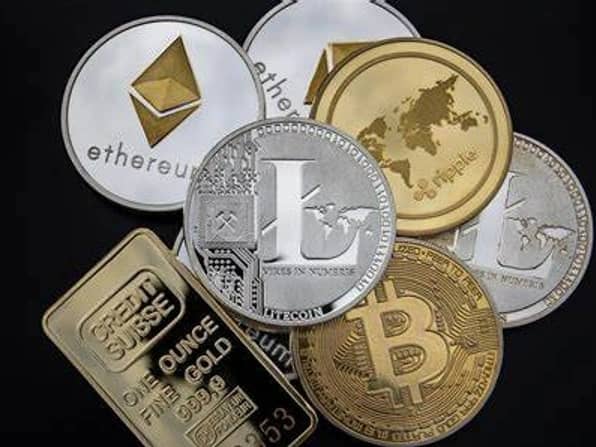위키 구독하기
Share wiki
Bookmark
Trading Fee
에이전트 토큰화 플랫폼 (ATP):에이전트 개발 키트(ADK)로 자율 에이전트 구축
Trading Fee
거래 수수료는 암호화폐 거래소가 암호화폐 매수 또는 매도 시 부과하는 수수료입니다. 거래 수수료는 일반적으로 거래 가치의 백분율로 표시되며, 거래소는 거래당 0.1%~1.5%의 수수료를 부과할 수 있습니다.[2]
개요
거래 수수료는 사용하는 거래 플랫폼에 따라 다르며, 여러 가지 방법으로 계산될 수 있습니다. 이러한 수수료는 거래 플랫폼의 원활한 작동을 촉진하고 지속 가능성에 기여하기 때문에 거래소의 주요 수익원 역할을 합니다. 일부 거래소는 거래당 고정 수수료를 부과하는 반면, 다른 거래소는 거래량에 따라 계층화된 수수료 체계를 사용합니다. 암호화폐 거래소는 고정 수수료 또는 계층화된 수수료 체계를 사용하여 수수료를 계산합니다. 고정 수수료는 거래 규모에 관계없이 각 거래에 대해 지불되는 고정 금액입니다. 계층화된 수수료 체계는 거래량에 따라 다른 수수료를 부과합니다.[1]
대부분의 암호화폐 거래소는 계층화된 메이커-테이커 수수료 체계를 사용합니다. 즉, 부과되는 거래 수수료는 특정 기간 동안 사용자의 거래량을 기준으로 합니다. 예를 들어, 한 달에 10 BTC 미만의 거래량을 가진 사용자는 0.15%의 메이커 수수료와 0.20%의 테이커 수수료를 지불할 수 있습니다. 그러나 한 달에 100 BTC 이상의 거래량을 가진 사용자는 0.05%의 메이커 수수료와 0.10%의 테이커 수수료를 지불할 수 있습니다.[3]
거래 수수료의 종류
암호화폐 거래 수수료는 암호화폐 거래소에서 매수 또는 매도 주문을 실행하는 데 발생하는 비용입니다. 거래 수수료에는 메이커 수수료와 테이커 수수료의 두 가지 주요 유형이 있습니다. 메이커 수수료는 시장에 유동성을 추가하는 주문을 생성하는 사용자에게 부과되며, 테이커 수수료는 시장 주문과 같이 시장에서 유동성을 가져가는 사용자에게 부과됩니다.[2]
메이커 수수료
메이커 수수료는 즉시 체결되지 않는 주문을 하는 거래자에게 거래소가 부과하는 수수료입니다. 이러한 주문은 거래소의 주문장에 유동성을 추가하기 때문에 "메이커 주문"으로 알려져 있습니다.[3] 거래소는 시장의 유동성에 기여하기 때문에 메이커에게 더 낮은 수수료를 제공합니다. 낮은 메이커 수수료는 거래자가 유동성을 제공하도록 유도하여 더 건전한 거래 환경을 조성합니다. 메이커 수수료는 일반적으로 테이커 수수료보다 낮으며, 시장 주문 대신 지정가 주문을 하거나 거래량이 적은 기간에 주문을 함으로써 피할 수 있습니다. 일부 거래소는 메이커 수수료에 대해 거래량 기반 할인을 제공하며, 이는 거래소에서 거래할수록 메이커 수수료가 낮아짐을 의미합니다.[4]
테이커 수수료
테이커 수수료는 거래자가 주문장에 있는 기존 주문과 일치하는 주문을 하여 시장에서 유동성을 "가져가는" 경우 적용됩니다. 테이커 수수료는 즉시 체결되는 주문을 하는 거래자에게 부과됩니다. 이러한 주문은 주문장에서 유동성을 제거하기 때문에 "테이커 주문"으로 알려져 있습니다.[3] 테이커 수수료는 거래소의 주문장에서 유동성을 제거하기 때문에 일반적으로 메이커 수수료보다 높습니다. 테이커 수수료는 즉시 체결되는 모든 주문에 부과되므로 피할 수 없습니다. 일부 거래소는 테이커 수수료에 대해 거래량 기반 할인을 제공합니다. 이는 거래소에서 거래할수록 테이커 수수료가 낮아짐을 의미합니다.[4]
출금 수수료
암호화폐 거래소는 사용자가 자금을 거래소에서 개인 지갑이나 외부 지갑으로 이동할 때 출금 수수료를 부과합니다. 이러한 수수료는 자산을 이체하는 데 필요한 블록체인 네트워크 거래 비용을 충당합니다. 출금 수수료는 출금되는 암호화폐와 거래소의 정책에 따라 다릅니다.[3]
암호화폐 거래 수수료에 영향을 미치는 요인
암호화폐 시장에서 거래 수수료를 결정하는 데는 여러 가지 요인이 기여합니다.
- 거래소 유형: 중앙화 거래소(CEX)부터 탈중앙화 거래소(DEX)까지 다양한 유형의 거래소가 존재합니다. CEX 플랫폼은 일반적으로 중앙 집중식 제어 및 인프라 비용으로 인해 거래 수수료가 더 높은 반면, DEX 플랫폼은 광범위한 유지 관리가 필요하지 않기 때문에 수수료가 더 낮을 수 있습니다.
- 거래량: 거래량이 많은 거래자는 거래소의 유동성과 수익에 대한 상당한 기여로 인해 종종 거래 수수료가 감소됩니다. 거래소는 계층화된 수수료 체계를 제공하여 활동적인 거래자에게 거래량에 따라 더 낮은 수수료를 제공할 수 있습니다.
- 암호화폐 자산: 거래 수수료는 거래되는 특정 암호화폐에 따라 다를 수 있습니다. 유동성이 적거나 시가총액이 작은 암호화폐는 비트코인이나 이더리움과 같은 더 인기 있는 자산에 비해 수수료가 더 높을 수 있습니다.
- 결제 방법: 일부 거래소는 자체 토큰이나 스테이블코인을 사용하는 것과 같이 특정 결제 방법을 사용하는 경우 거래 수수료 할인을 제공합니다.
잘못된 내용이 있나요?
